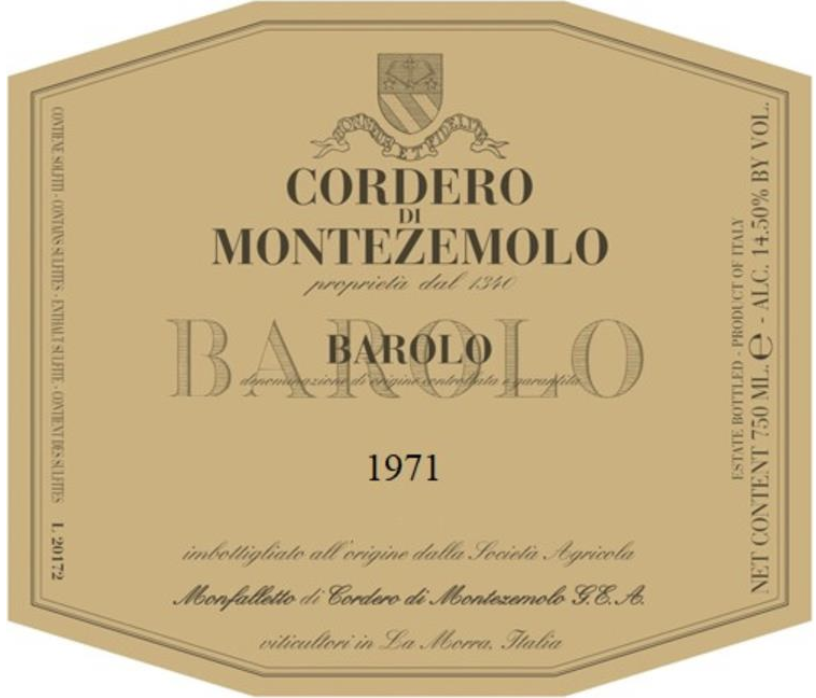1971 Barolo Nebbiolo
The Cordero Di Montezemolo Barolo from the iconic vintage of 1971 showcases the timeless elegance of Nebbiolo. This wine presents a deep red hue that hints at its maturity and character. With a full-bodied profile, it envelops the palate with a rich tapestry of flavors, bringing forth notes of cherry, dried rose petals, and a touch of leather that define the variety. Its acidity is notably bright, adding a refreshing lift that harmonizes beautifully with the wine's robust structure. The tannins are firm yet refined, providing a solid backbone that promises longevity and depth. This Barolo is beautifully dry, allowing the intricate layers of fruit and earthy undertones to shine through, culminating in a finish that lingers delightfully, inviting you to savor each sip.
The Cordero Di Montezemolo Barolo from the iconic vintage of 1971 showcases the timeless elegance of Nebbiolo. This wine presents a deep red hue that hints at its maturity and character. With a full-bodied profile, it envelops the palate with a rich tapestry of flavors, bringing forth notes of cherry, dried rose petals, and a touch of leather that define the variety. Its acidity is notably bright, adding a refreshing lift that harmonizes beautifully with the wine's robust structure. The tannins are firm yet refined, providing a solid backbone that promises longevity and depth. This Barolo is beautifully dry, allowing the intricate layers of fruit and earthy undertones to shine through, culminating in a finish that lingers delightfully, inviting you to savor each sip.




